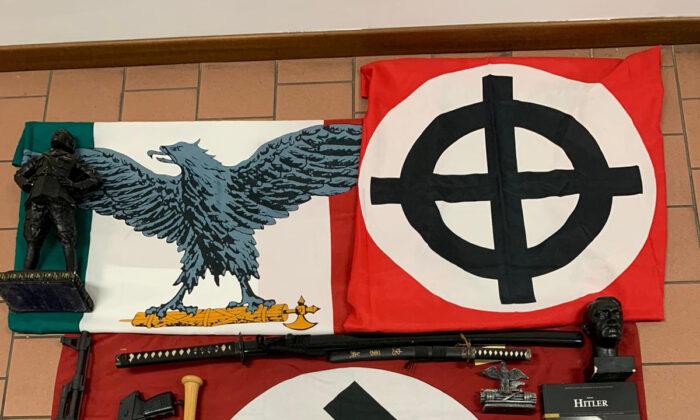The Pentagon has spent some $14.1 trillion over the last 20 years, at least $4.4 trillion of which has gone to military contractors, according to a new study from the Center for International Policy.
The author of the research, Center for International Policy director William Hartung, said that five main companies have collected the lion’s share of the $4.4 trillion: Lockheed Martin, Raytheon, General Dynamics, Boeing, and Northrop Grumman. Those companies have collected 25 to 33 percent of all Pentagon contracts over the last two decades, according to Hartung.
“From FY 2001 to FY 2020 these five firms alone split over $2.1 trillion in Pentagon contracts (in 2021 dollars),” Hartung wrote.
“To put these figures in perspective, the $75 billion in Pentagon contracts received by Lockheed Martin in FY 2020 is well over one and one-half times the entire budget for the State Department and Agency for International Development for that year, which totaled $44 billion.”
Hartung said that some of the corporate profits derived from the wars have been seen as legitimate, but other profits were the consequence of waste, fraud, or abuse.
Hartung recounted one of the most notorious examples of war profiteering: Halliburton subsidiary Kellogg, Brown and Root’s involvement with numerous projects in Iraq and Afghanistan.
Among the reasons Halliburton’s involvement in the wars was so controversial is because Dick Cheney served as the company’s chief executive up until he became vice president in 2001. Cheney also owned Halliburton stock worth $46 million, and he received $162,000 in deferred compensation from the company as late as 2002, according to Hartung, citing congressional testimony from that time.
“Cheney’s journey from the government to Halliburton and back was a classic case of the revolving door between the Pentagon and the defense industry, with all the real and potential conflicts-of-interest that entails,” Hartung said.
“Halliburton’s performance was another major source of criticism, as it was found to be dramatically overcharging for basic services and doing faulty work that put U.S. troops at risk,” he added.
But while Halliburton may be one of the most prominent cases of war profiteering, it is far from the only one, Hartung said.
Other examples cited by the Center for International Policy researcher include a U.S.-appointed economic task force that spent $43 million on a gas station that was never used, another $150 million on lavish living quarters for U.S. economic advisers, and $3 million for patrol boats in landlocked Afghanistan—also never used.
Along with the major firms, relatively smaller contractors also benefited from what Hartung described as the “chaotic atmosphere” that prevailed in the early days of the war.
A company called Custer Battles, for instance, had a contract to guard the Baghdad airport and collect old Iraqi currency so it could be destroyed. Hartung said the reason Custer Battles received the contract was because it underbid its competitors, even though it has no experience in airport security.
Citing an Army inspection of their operations, Hartung said Custer Battles hired security guards with no prior training, hired no translators who spoke Arabic, and acquired no security dogs to detect explosives.
Custer Battles was eventually barred from government contracting and fined $10,000, but that was far less than what the company earned from its contract, according to Hartung.
Hartung highlighted numerous other examples of contractor abuse over the last 20 years, warning that many of the same companies are gearing up for potential conflict with China.
“The China threat argument has been utilized to justify the quest for a 350-ship Navy—up from about 300 ships currently; major Air Force purchases like a new bomber and the F-35 combat aircraft; the Pentagon’s $1.5 trillion, three decades-long proposed nuclear weapons upgrade plan; the Space Force, a new branch of the armed forces; major expenditures on missile defense systems; and large new investments in cyber technologies and tactics (offensive and defensive), unmanned systems, hypersonic weapons, and artificial intelligence,” he said.
“Many of these initiatives were well along before China became the primary preoccupation of U.S. military planners, but the ‘China card’ has become the argument of choice to consolidate political support for these expenditures.”
Hartung said his Center for International Policy has proposed a “more realistic approach” to the challenges posed by China and Russia—relying more on allies, pursuing diplomatic solutions to actual and potential nuclear proliferation, and cutting excess bureaucracy, including reducing the Pentagon’s employment of more than 600,000 private contract personnel.
This could save some $1.2 trillion over the next decade, according to Hartung.
“Given the immense financial and human costs of America’s post-9/11 wars—and the negative security consequences generated by many of these conflicts—adopting a new, less militarized foreign policy should be a central goal of the public and policy makers alike,” he said.
“Recent developments, like the withdrawal of U.S. troops from Afghanistan, are steps in the right direction, but much more needs to be done to achieve a policy that prioritizes diplomacy over war.”
The Epoch Times has contacted Lockheed Martin, Raytheon, General Dynamics, Boeing, and Northrop Grumman for their responses to the study.




